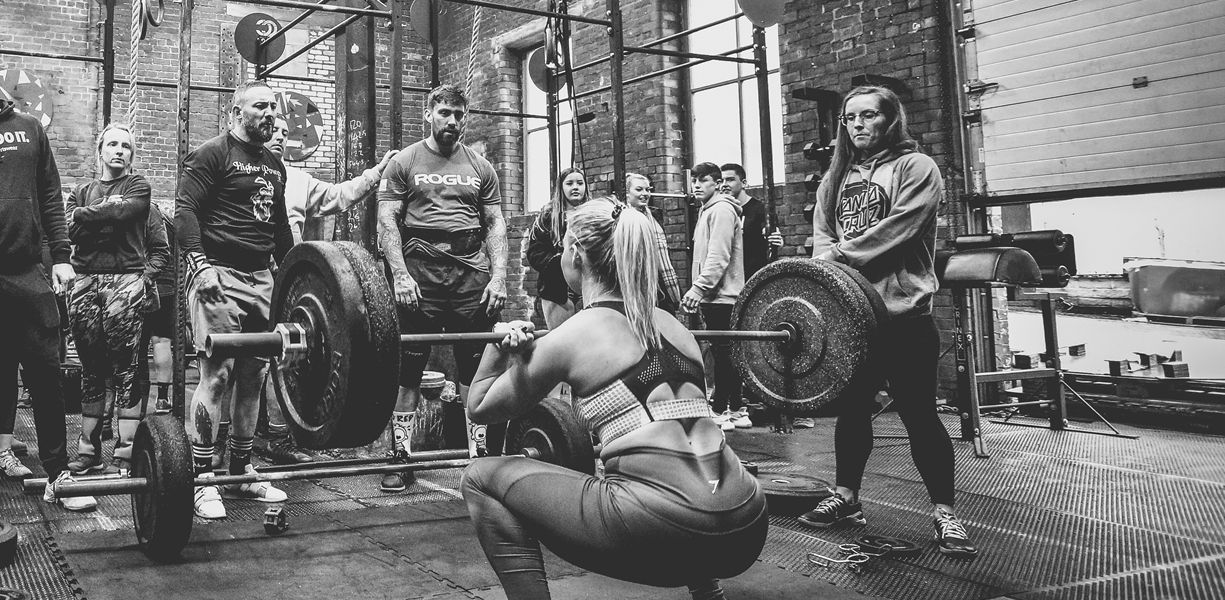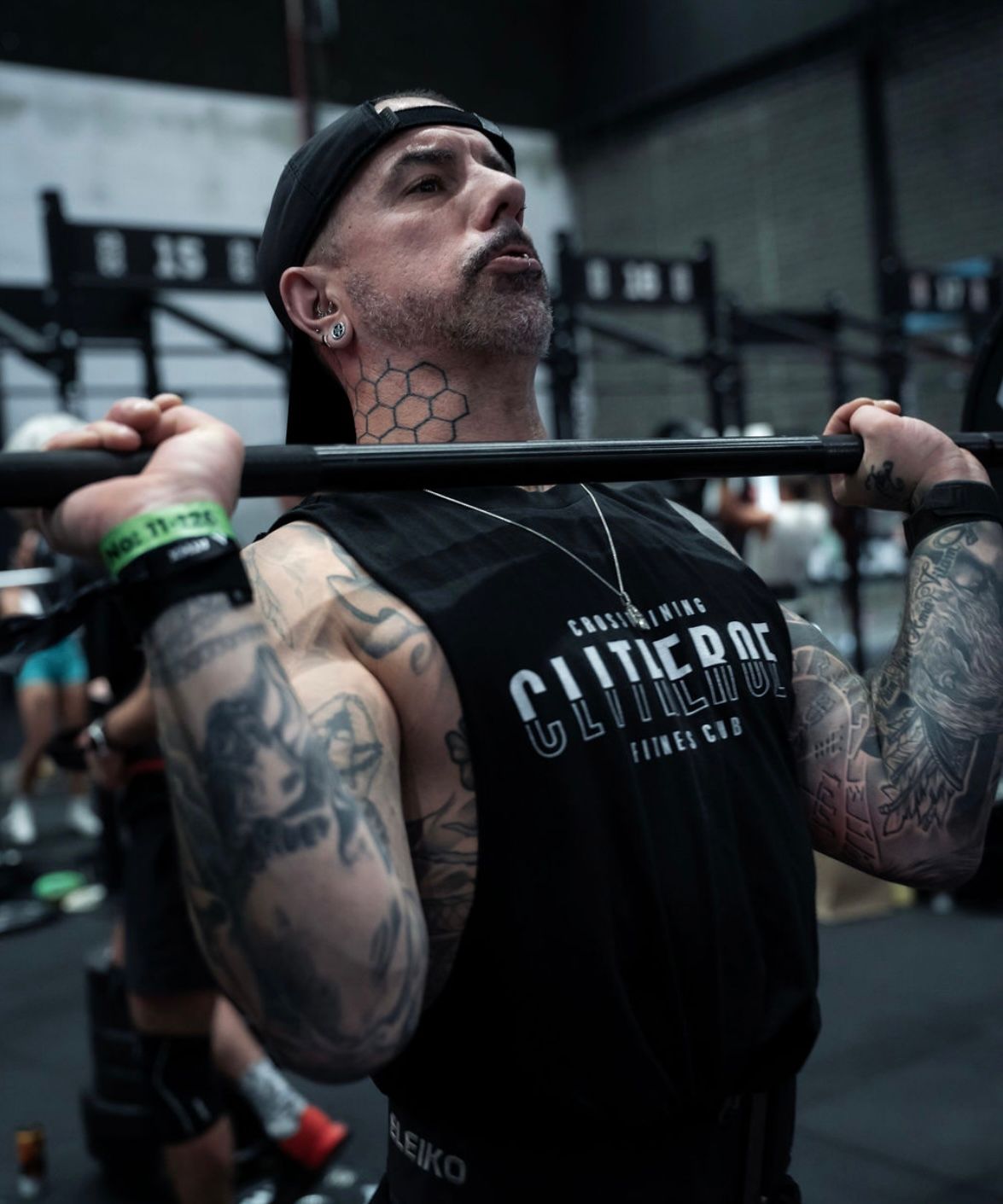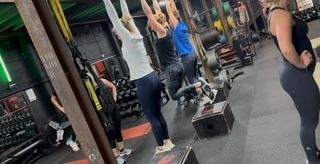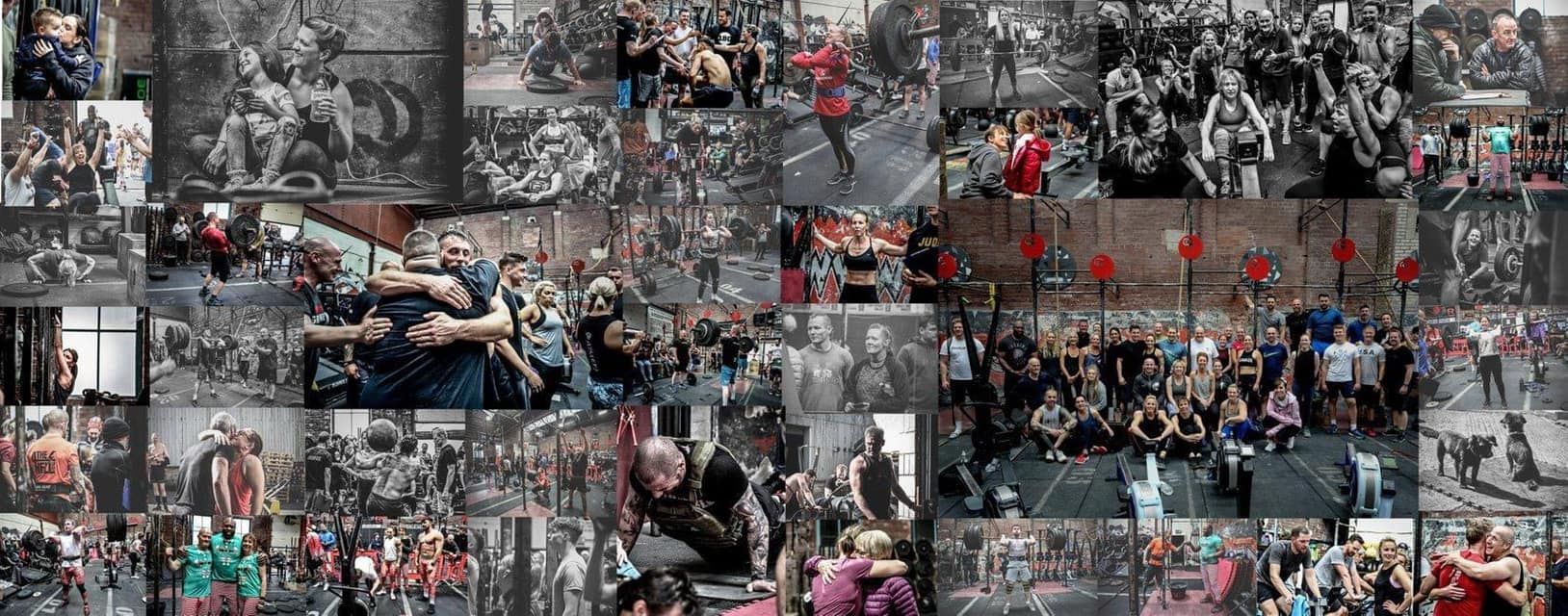Why Building Muscle Is Essential for Weight Loss
Chris Templeman • September 10, 2025
BUILDING MUSCLE

Why Building Muscle Is Essential for Weight Loss
If you're on a weight-loss journey, lifting weights and building muscle can be one of the most effective ways to achieve your goals, often surpassing the benefits of cardio alone. When you increase your muscle mass, your body burns more calories even at rest, helping you achieve faster, more sustainable weight loss results. Here’s why building muscle should be part of your fitness strategy.
1. Muscle Burns More Calories Than Fat
Muscle tissue requires significantly more energy to maintain compared to fat tissue. Studies suggest that muscle burns about 30 calories per kilogram daily, while fat burns only around 3 calories per kilogram. This means that as you increase your muscle mass, your body’s resting metabolism increases, allowing you to burn more calories throughout the day—even when you're not working out.
2. Better Body Composition and Muscle Definition
If your goal is to achieve a lean, toned look, focusing on muscle-building exercises can be far more effective than cardio alone. Strength training helps you build defined muscles, creating a “toned” appearance. While cardio is excellent for cardiovascular health and burning calories, it doesn’t do as much to improve muscle tone or increase muscle mass.
3. The Role of Protein in Muscle Repair and Growth
Building muscle requires more than just lifting weights; it also demands adequate recovery and nutrition. Protein is the primary nutrient responsible for muscle repair and growth, and many people don’t consume enough protein to support these processes. Without sufficient protein, it’s harder for your muscles to recover and grow after workouts, and you won’t see the full benefits of your weight training efforts.
Let’s break down a basic protein intake requirement:
If we take an example of a man weighing 80kg with 20% body fat (16kg of fat), that leaves him with about 61kg of muscle mass.
A general guideline for protein intake is 2 grams per kilogram of lean muscle mass. For this person, the daily requirement would be around 122 grams of protein.
4. How to Meet Your Daily Protein Needs
While it’s best to source protein from whole foods like lean meats, fish, eggs, and legumes, hitting your daily target can require some planning. For example, an average chicken breast has around 28 grams of protein, so you would need about four servings to meet a 122-gram target. This can be challenging to achieve consistently, especially with a busy lifestyle.
In this case, supplements can be helpful. A high-quality protein shake or supplement can help you hit your protein goal without forcing yourself to eat when you're not hungry. Just be mindful to avoid consuming more than 30 grams of protein in a single sitting, as your body can’t efficiently absorb more than that amount at once. For optimal results, spread your protein intake across meals, especially after your workout to aid in recovery.
5. Dialing in the Rest of Your Nutrition: Carbs and Fats
Once you’re regularly meeting your protein goals, it becomes easier to balance the rest of your nutrition, such as carbohydrates and fats. Finding the right balance of these macronutrients will give you the energy to power through workouts and recover well, without adding unwanted body fat.
6. A Balanced Diet for Lifelong Fitness
Following CrossFit founder Greg Glassman’s simple nutrition advice from “Fitness in 100 Words” can help keep you on track:
“Eat meat and vegetables, nuts and seeds, some fruit, little starch, and no sugar. Keep intake to levels that will support exercise but not body fat.”
This approach emphasizes nutrient-dense foods and limits sugars and refined carbs, which is a solid foundation for both weight loss and general health.
Final Thoughts
Building muscle is a powerful tool for weight loss and body transformation. Not only does it help you burn more calories at rest, but it also contributes to a strong, toned physique and supports overall health. By combining strength training with a protein-rich diet and balanced macronutrient intake, you can achieve a leaner, more defined body and enjoy the lasting benefits of a higher metabolism.

Why I Compete Like most people (even if not everyone admits it), I’m competitive. It’s human nature to want to win — or at least give your best. The thought of losing, or knowing you didn’t perform at your potential, just doesn’t sit right. As I mentioned in my last blog, I have to train to be my best today. Sure, Father Time plays his part, but that doesn’t mean I can’t bring the same mental drive and effort to everything I do. When I discovered CrossFit 18 years ago, the challenge was learning all these movements I’d never done before. For those who don’t know, CrossFit.com posts a “Workout of the Day” (WOD). People all over the world complete it, post their scores, and compare results. I got hooked — chasing times, competing with people I’d never even met. A few years later, CrossFit competitions started appearing, and since then, I’ve taken part in all kinds of CrossFit and hybrid events. When you sign up for something like that, you want to show up ready — to do your best, to look like you belong, and to walk away proud of your effort. That takes preparation and consistency. One phrase that’s always stuck with me is: “Train hard, fight easy.” It’s simple accountability. If I’m not prepared, I’ll have a rough day. I could get injured, or I just won’t perform how I hoped. For me, competing is public goal-setting. It’s putting myself in a situation where if I don’t train, if I don’t show up and do the work, I’ll fall short — and everyone will see it. But it’s not about winning. It’s about showing up. Day after day, putting in the effort to be my best — for whatever life or competition throws my way.

A PB Now vs. A PB Then By Chris Templeman, CrossTraining Clitheroe I write these blogs to answer the questions I get asked daily — and the ones I often ask myself. This topic is one I hear, see, and personally feel more than ever: “Why can’t I do what I used to?” Looking Back: The Last Few Years For over 15 years, CrossFit was my daily fitness routine. It was my structure, my outlet, and my social time. But as life got busier — with work, kids, and, of course, the Covid lockdowns — that rhythm was broken. Over the past couple of years, I’ve dipped in and out of various training. I’ve done some HYROX, bits of CrossFit, but I haven’t dedicated the same time to my strength and skill work like I once did. And I’ll be honest — coming back felt hard. My body ached more. Workouts that used to feel normal suddenly felt heavy and slow. And in true stubborn fashion, I even entered a competition thinking I could still perform like my pre-Covid self… and ended up giving myself Rhabdo. 🤦🏻♂️ Lesson learned. Why It Happens: Comparing Yourself to Your Past Self I hear it all the time: “I can’t do CrossFit anymore — it injures me.” “I can’t lift heavy because of my back/knee/shoulder.” The truth is, it’s not the training that changed — it’s us. We often compare ourselves to the version of us who built up to that level — who trained consistently, recovered properly, and developed a solid foundation of strength and mobility. When you first started, it was hard. But you adapted. You got stronger. You moved better. That’s why you could do what you did then. The issue comes when we expect the same results from a body that hasn’t been conditioned the same way recently. Redefining a PB When I was in my 30s, my back squat PB was 197.5kg — a number that took years of consistent, intentional training to achieve. Fast forward to now: I’m 46, haven’t trained heavy squats for a few years, and today my PB is 143kg. And you know what? That’s my PB now — and I’m proud of it. I didn’t get injured. I had fun. I moved well. And I’ll be back in the gym tomorrow, ready to keep building. The Takeaway Your PBs evolve with your life — and that’s okay. They reflect where you are right now, not where you used to be. Whether you’re just getting started, coming back after a break, or adapting training around a busy life, remember: Progress isn’t just about numbers — it’s about consistency, health, and longevity. So celebrate your PB today — because it represents who you are now, and the effort you’re still putting in. 💪

The body contenThe Surprisingly Powerful Benefits of Just Hanging from a Bar When most people walk into the gym, they think about squats, deadlifts, or kettlebell swings — not just hanging around. But one of the simplest, most overlooked movements in fitness is also one of the most powerful: the bar hang. Whether you’re a seasoned CrossFitter or just starting your strength journey, spending a few minutes hanging from a pull-up bar can unlock massive benefits for your shoulders, grip, posture, and even your mental focus. 1. Shoulder Health & Mobility Modern life has most of us hunched over desks, phones, and steering wheels. This takes a toll on our shoulder joints and posture. Hanging from a bar — known as a dead hang — helps counteract this by gently decompressing the spine and opening up the chest and shoulders. Regular hanging: Improves shoulder mobility and joint stability Helps relieve impingement and tension Encourages better posture by lengthening tight muscles through the chest and lats It’s essentially a natural “reset” for your upper body — no chiropractor required. 2. Grip Strength for Everything You Do From pull-ups and snatches to farmer carries and even daily tasks like opening jars, grip strength is essential. Hanging builds grip endurance fast, engaging the forearms, wrists, and hand muscles in a way few other movements can. Strong grip = stronger lifts. It’s also a key marker of long-term health and functional strength as we age. 3. Core Activation Without Crunches Try holding a tight, controlled hang — you’ll instantly feel your core engage. Static holds like active hangs (where you pull your shoulder blades down and keep tension) recruit your abs, obliques, and stabilising muscles through your entire trunk. Combining static hangs with isometric holds (like L-sits or tuck holds) can build tremendous core strength and control without a single crunch or sit-up. 4. Build & Maintain Muscle with Static Holds Static or “isometric” holds — where you contract your muscles without moving — are an underrated way to build and maintain strength. When you hold your body in a fixed position (like an active hang, flexed-arm hang, or plank), your muscles work hard to maintain tension. Over time, this: Increases muscle endurance Improves neuromuscular connection (mind–muscle link) Builds lean muscle mass without heavy joint stress Try combining hangs with other static positions: Flexed-arm hang – great for biceps, lats, and grip L-sit hold – targets the core and hip flexors Hollow hold – builds full-body tension and posture control These simple, equipment-light movements are incredibly effective for maintaining muscle and strength when training volume or load is lower — such as during deload weeks, injury recovery, or travel. 5. A Mental Edge There’s something raw and meditative about just hanging. It demands focus, breath control, and calm under tension — all qualities that transfer into your training and life. It’s a moment of stillness that builds resilience, grip by grip. How to Get Started You don’t need to overthink it. Start small: Hang for 20–30 seconds at a time Build up to 60 seconds or more Mix between dead hangs (relaxed shoulders) and active hangs (shoulders engaged) Add in static holds like L-sits or flexed-arm hangs once you’re comfortable If you train at CrossTraining Clitheroe, the rigs are perfect for it — hop on after class or between sets and feel the difference in your shoulders and grip within a few weeks. Final Thoughts You don’t always need to move to get stronger. Sometimes, strength comes from holding still. So next time you’re in the gym — hang around for a while. Your body (and your shoulders) will thank you for it. Ready to get started? Ask one of our coaches at CrossTraining Clitheroe for a quick bar hang challenge or mobility drill next time you’re in. Small habits like this are what keep you strong, healthy, and moving well for life.

Before opening CC 15 years ago I was working in a gym / health club and I had spent 10 years exploring all aspects of fitness, I gained lots of experience of working on the gym floor on 1 -1 basis and teaching group fitness classes such as Bodypump and Bodycombat circuits etc.. What I quickly learned is that those I worked with on a 1-1 basis got great results and the work outs stayed fresh but it obviously came with a higher price tag, and also the time spent working in the gym for those guys were lonely. The people in the group fitness classes were clearly having a great time, the work-outs were fun and there was a sense of community as groups gathered daily and people made life long friends, but the issue I soon realised was that the lack of variety in the work-outs and the repetitiveness of the program got slower results as the body become a custom to the stimulus. This was were I started playing with the idea of small group PT, a group of people coming together and working with me, following a program that was constantly varied and worked on all aspects of fitness but most importantly as people became fitter and stronger the program grew with them. Then In 2006 I found CrossFit and the stars aligned, finally a methodology that would transform everyday people into athletes, group fitness that had progression of the basic movements in life at its heart. CrossFit Clitheroe opened its doors in 2010, unlike the other CrossFit gyms out there I opened the doors with not just CrossFit, but we had spinning classes, body building, boxing classes and low skill high out put sweat classes. In my eyes there was no such thing as bad fitness just different expressions and CC would be a home for all things fitness, and we still hold that value to this very day. 15 Years later we still offer CrossFit as our staple programme along side, HYROX, DEKA, Indoor Cycling, Bodybuilding, Power Lifting, Strongman, if its fitness and makes you better then its welcome at CC. At CC we always striving to the common in commonly well 💪


